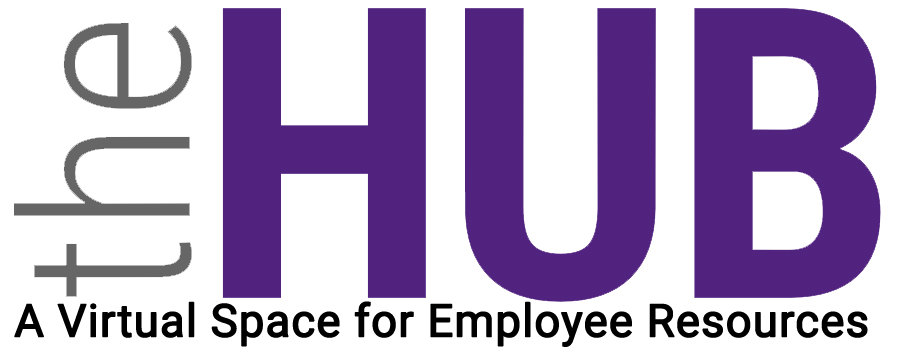Skill Development
The Skill Development section of our Staff Resources page is designed to help you enhance key competencies that are crucial for professional success. Whether you’re looking to improve your technical know-how, communication abilities, or decision-making skills, this section offers a range of resources and exercises to support your growth.

Basic IT Troubleshooting
Basic IT troubleshooting helps you identify and resolve common tech issues quickly, improving productivity and reducing reliance on IT support.
Troubleshooting Steps:
- Identify the Problem
- Understand what’s not working and try to replicate the issue.
- Check for Simple Fixes
- Restart your device.
- Check connections (cables, devices).
- Update software and apps.
- Clear Cache and Restart Apps
- Clear app caches or restart the app for performance issues.
- Check for System Alerts
- Look for error messages or notifications.
- Test on Another Device
- Try the issue on another computer or user account.
Active Listening Techniques
Active listening is a crucial skill that fosters better communication, stronger relationships, and improved collaboration in the workplace.
Key Techniques for Active Listening
- Maintain Eye Contact
Demonstrate attentiveness by maintaining eye contact with the speaker, signaling that you are fully engaged. - Avoid Interruptions
Allow the speaker to express their thoughts fully before responding. Avoid interjecting or thinking about your response while they are speaking. - Use Non-Verbal Cues
Show understanding and encouragement through gestures like nodding, leaning slightly forward, or maintaining an open posture. - Ask Clarifying Questions
Seek to understand by asking open-ended questions or requesting clarification on points that are unclear. - Paraphrase and Reflect
Summarize what the speaker has said to confirm your understanding and show that you value their input. - Be Fully Present
Eliminate distractions, such as checking your phone or multitasking, to focus entirely on the conversation. - Practice Empathy
Acknowledge the speaker’s emotions and perspectives, even if they differ from your own.
Benefits of Active Listening
- Builds trust and respect.
- Enhances problem-solving and decision-making.
- Reduces misunderstandings and conflicts.
- Promotes a collaborative and supportive workplace environment.
Public Speaking Tips
Public speaking is an invaluable skill that enhances confidence, clarity, and the ability to inspire and influence others.
Key Tips for Public Speaking
- Know Your Audience
Tailor your message to the interests, needs, and expectations of your audience to ensure relevance and engagement. - Practice, Practice, Practice
Rehearse your presentation multiple times to become comfortable with the material and identify areas for improvement. - Start Strong
Open with a compelling story, statistic, or question to immediately capture your audience’s attention. - Organize Your Content
Structure your presentation with a clear introduction, body, and conclusion to ensure your message is easy to follow. - Speak Clearly and Confidently
Use a strong, steady voice and articulate your words to convey confidence and professionalism. - Use Visual Aids Effectively
Enhance your presentation with visuals like slides or charts, but avoid overloading them with information. - Engage with the Audience
Encourage interaction by asking questions, inviting feedback, or incorporating relatable anecdotes. - Manage Nervousness
Practice deep breathing techniques, focus on positive thoughts, and remind yourself of your preparation to stay calm. - Use Body Language Wisely
Maintain an open and confident posture, use gestures to emphasize points, and make eye contact to connect with your audience. - End with Impact
Close your speech with a memorable takeaway or call-to-action that leaves a lasting impression.
Benefits of Public Speaking Skills
- Boosts confidence in professional settings.
- Enhances leadership and persuasive abilities.
- Improves communication and collaboration.
- Increases opportunities for career advancement.
Critical Thinking Exercises
What Is Critical Thinking?
We frequently apply critical thinking skills when we ask questions, read an article, watch television, listen a radio broadcast, and in many others instances. The uses of critical thinking depend on many factors including the subject matter, our background experiences, culture, and intellectual abilities. A person’s experiences form the bases of reference or benchmark when trying to apply critical thinking skills in solving a problem or making a decision.
There are many definitions of critical thinking but, in my opinion, the one that stands out is by Scriven and Paul (1987): “Critical thinking is the intellectually disciplined process of actively and skillfully conceptualizing, applying, analyzing, synthesizing, and/or evaluating information gathered from, or generated by, observation, experience, reflection, reasoning, or communication, as a guide to belief and action.”
Critical Thinking and Information Literacy
With the continuing increases in social media tools and information on the Internet, the demand for critical thinking skills also increases. Some of that information may be false and some may be valid but requiring analytical skills in order to make sense of it. Therefore, we should be teaching our students such skills. For instance, when they read an article from the Internet, they should be able to determine what the facts are; whether the sources are credible; what the author’s point of view is and how bias may have played a part. They should show some level of skepticism instead of just being consumers of information.
Why Teach Critical Thinking Skills?
Critical thinking skills will also be beneficial when students graduate and have to face the competitive and challenging labor market. Students will need higher level thinking skills to evaluate job advertisements and demonstrate their eligibilities for job offers during interview settings. Some analysts contend that ‘The biggest problem facing educators today is the inability of most students to think analytically” (The Critical Thinking Co., 2005)). For example, they should be able to evaluate evidence, arguments, claims and beliefs, and solve different types of problems using appropriate methods. Graduates need analytical skills to solve not only job-related problems but also other challenges beyond school years.
How Can I Incorporate Critical Thinking Into My Courses?
There are strategies that are subject-matter specific and others that are applicable to broad areas. Strategies that promote thinking skills across disciplines (Orlich et al., 1994) include:
- Classifying and categorizing content: creating schemes, patterns, or chunks of related content
- Comparing and contrasting: being able to separate relevant from irrelevant data.
- Encouraging creativity: using a wide range of techniques such as brainstorming to create new and valuable ideas.
- Making connections: encouraging students to make connections between the lesson and real-life situation will increase relevance and enthusiasm.
- Providing group opportunities: being able to work effectively and respectfully with diverse teams
- Being open-minded: Acknowledging that it is plausible to have more than one solution to a problem and that you could be wrong.
Reference:
- Orlich, D. C, Harder, R. J., Callahan, R. C., Kauchak, D. P., Gibson, H. W. (1994): Teaching Strategies: A Guide to Better Instruction (4th ed.). Lexington, MA: Heath & Company.
- Scriven, M., Paul, R. W. (1987). Defining Critical Thinking: Draft statement written for the National Council for Excellence in Critical Thinking Instruction. Retrieved from: http://www.criticalthinking.org/pages/defining-critical-thinking/766
- The Critical Thinking Co. (2005). Teaching Critical Thinking Skills. Retrieved from: https://www.criticalthinking.com/articles/teaching-critical-thinking-skills?gclid=EAIaIQobChMI_r2Y1KWu8gIVwpyzCh2ErQ2OEAMYAiAAEgKEC_D_BwE
Additional Resource with an Annotated List:
- Gazier, J. D. (2010). Fostering Critical Thinking. Retrieved from: https://www.westpoint.edu/sites/default/files/inline-images/centers_research/center_for_teching_excellence/PDFs/mtp_project_papers/Cazier_10.pdf
Decision Making Framework
It is September and time to finalize our personal and professional goals in Workday. As each of us sets goals for the FY23 year, we should ask ourselves several important questions during and after the process. These questions and your answers will inform your plan for achieving your goals. As you make progress during the year, revisit these questions to inform you, redirect you, and improve your success in achieving them.
- What did I start and not finish this past year? If you set but did not accomplish a goal from last year, think about what happened. Was the scope too big given your time and resources? If so, can you revisit the plan and adjust the scope? Did other priorities take precedence? If this happened, is the goal still relevant and worth pursuing this year? Making decisions about unmet goals helps us start with a fresh approach.
- Why is achieving this goal important to me? This question ranks number one for a good reason. Without a clear and compelling reason, you will likely not give time or thought to completing the goal, and the answer keeps the reason planted in your mind.
- What will success look like? Visualize the result in a three-dimensional way. Think about what you will see, feel, and hear when you reach this goal. This question helps you picture success more realistically.
- How will I benefit from reaching this goal? This question ties the first two together and helps you see the value in the effort required to achieve that goal.
- How do I begin? Identify the very next step you need to take. You will never achieve the goal if you don’t take that next step.
- What step will take me the furthest in the shortest time? While question four identifies the very first step, this question identifies what will give you the “biggest bang for your buck.” Make wise choices.
- Who can help me achieve the goal? Identify the person or people who have the tools and resources to assist you in reaching your goal.
- Who will support me? Share your goal with someone who believes in you and will cheer you on as you work toward your goal.
- Who will not support me? This question is more important than the last one. Knowing who can potentially block or thwart your efforts helps. Don’t change course; begin by ignoring them, and your eventual success will be more satisfying to you.
- How will I stay focused during the process? Reaching goals takes time, energy, and focus. Answering these questions will provide a roadmap showing direction, resources, and obstacles. With these items identified, the path to achieving your goals will be easier to navigate.
Helpful Resources
- Leadership and Learning with Kevin Eikenberry: A leadership and learning consulting company.
- Camden Kelly: An information technology staffing firm. https://camdenkelly.com/ask-these-15-questions-before-setting-your-professional-goals-for-the-new-year/
Staff Professional Day
Contact Us
Whether you have questions, feedback, or need assistance, feel free to reach out to us. Our team is here to help and will get back to you as soon as possible. Please fill out the form, and we’ll be in touch shortly!

